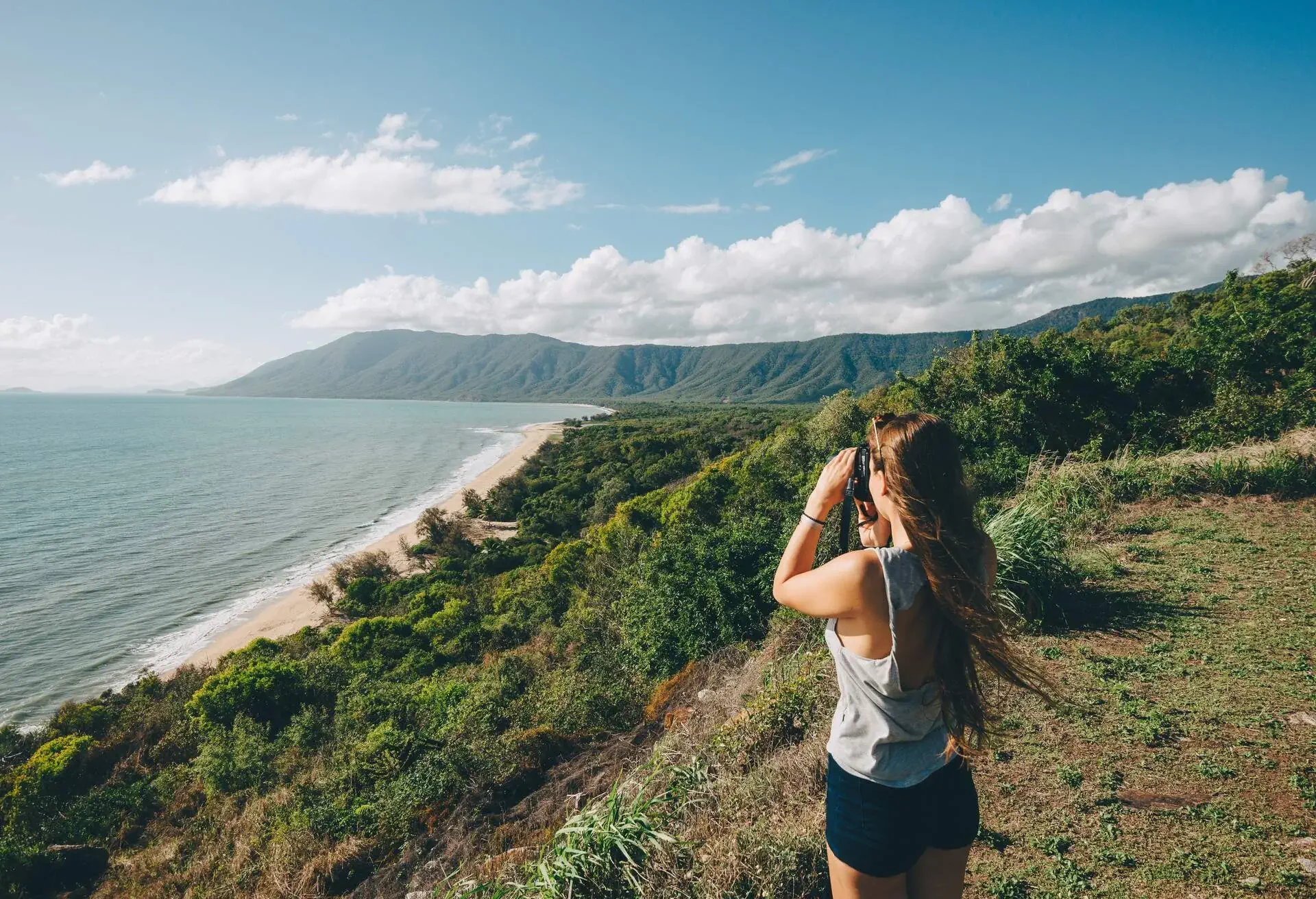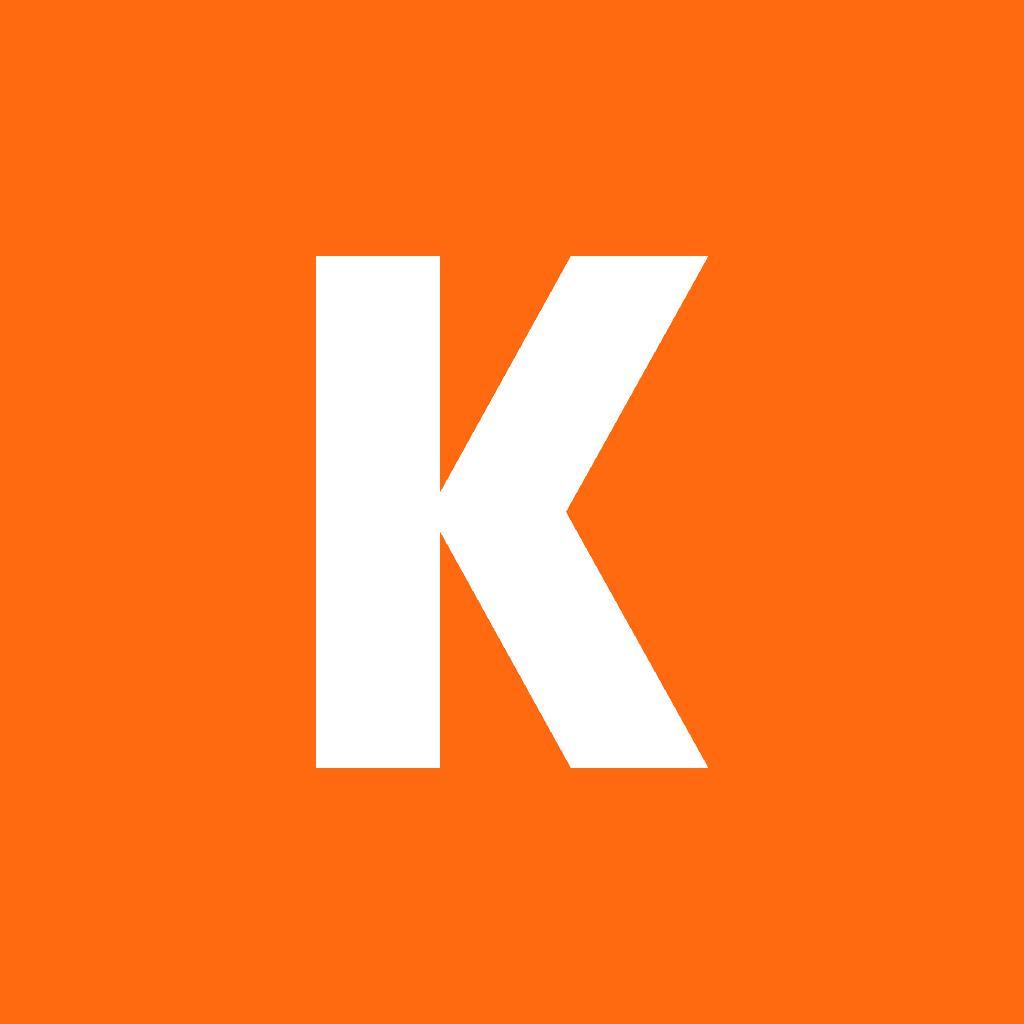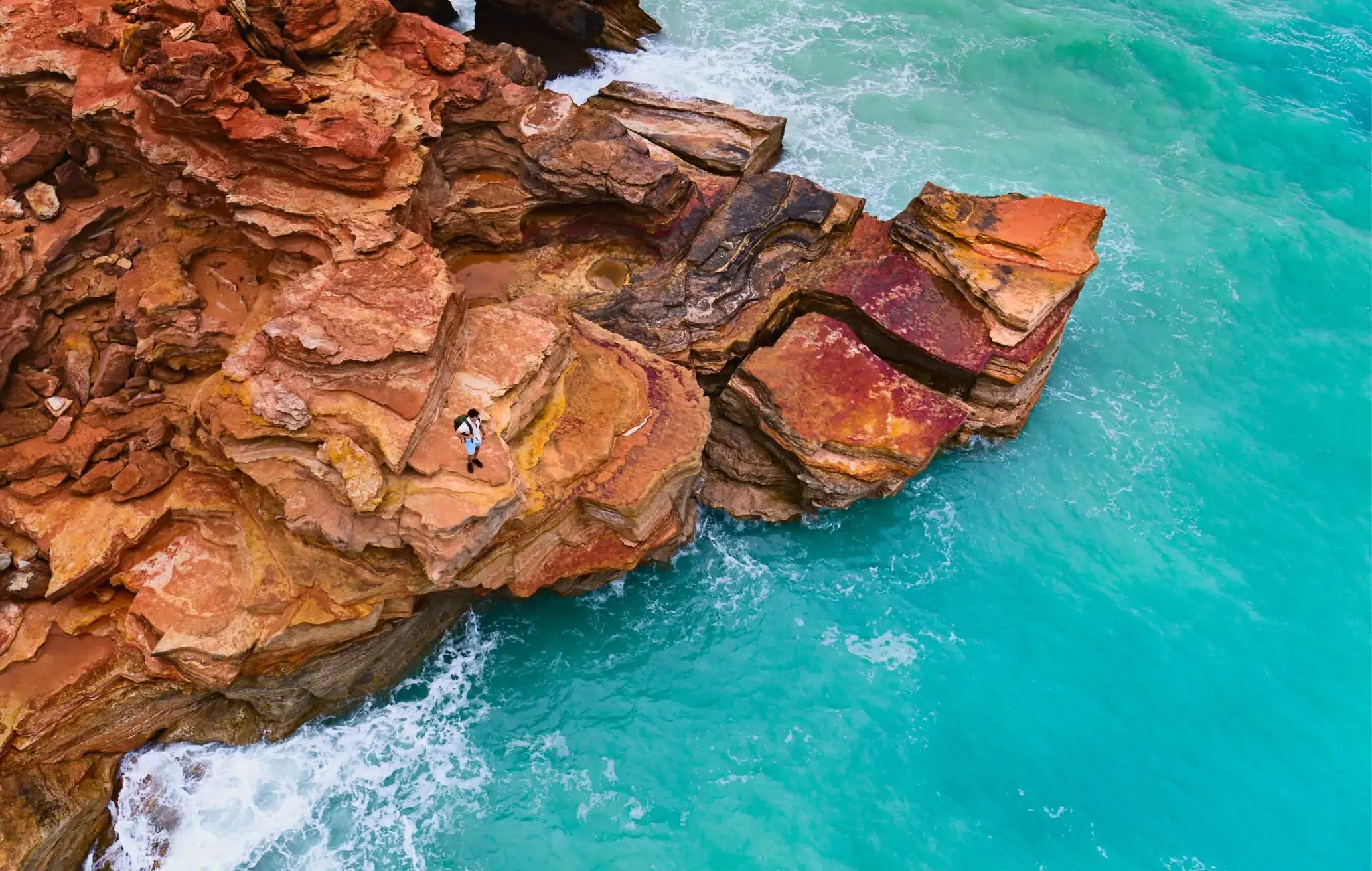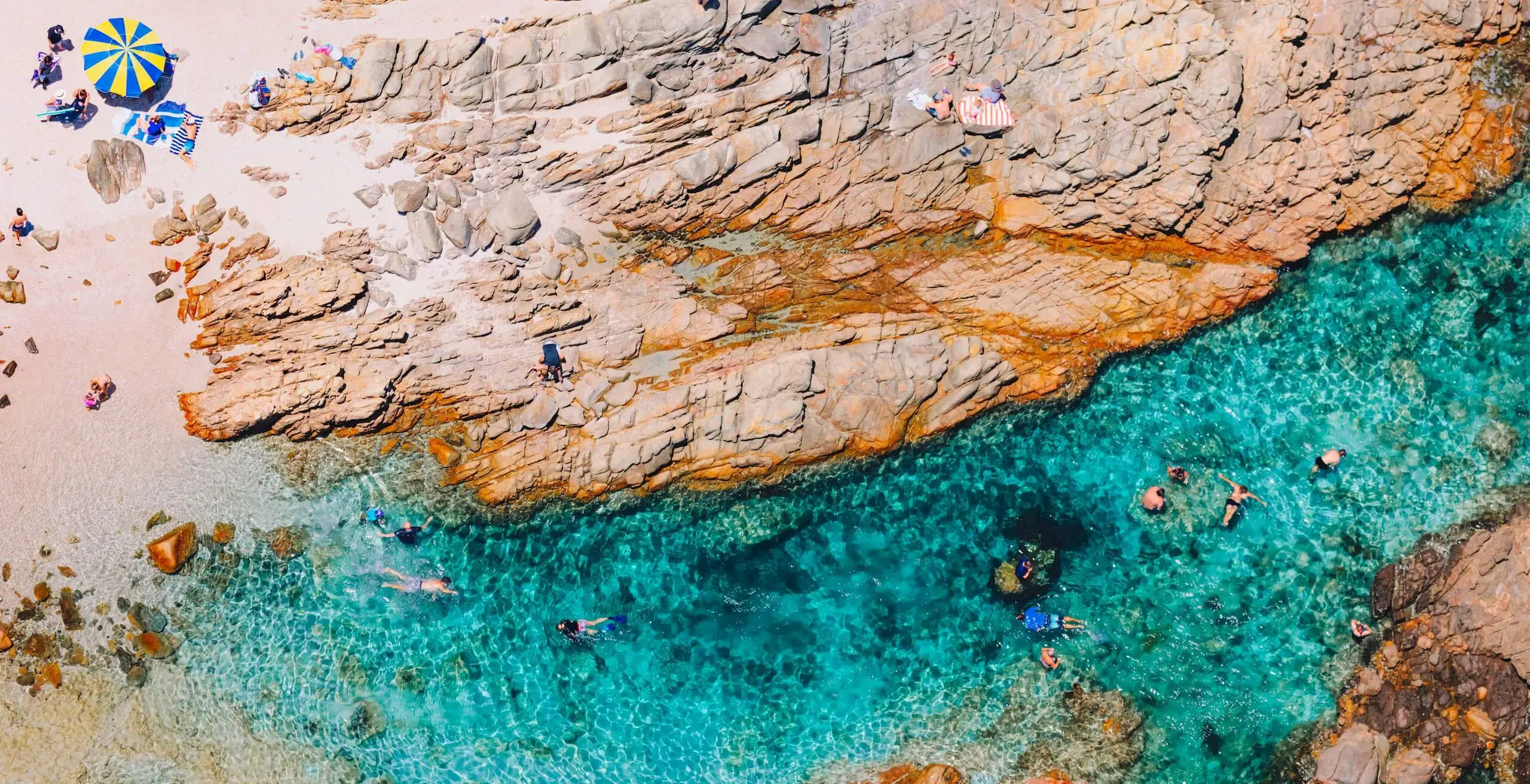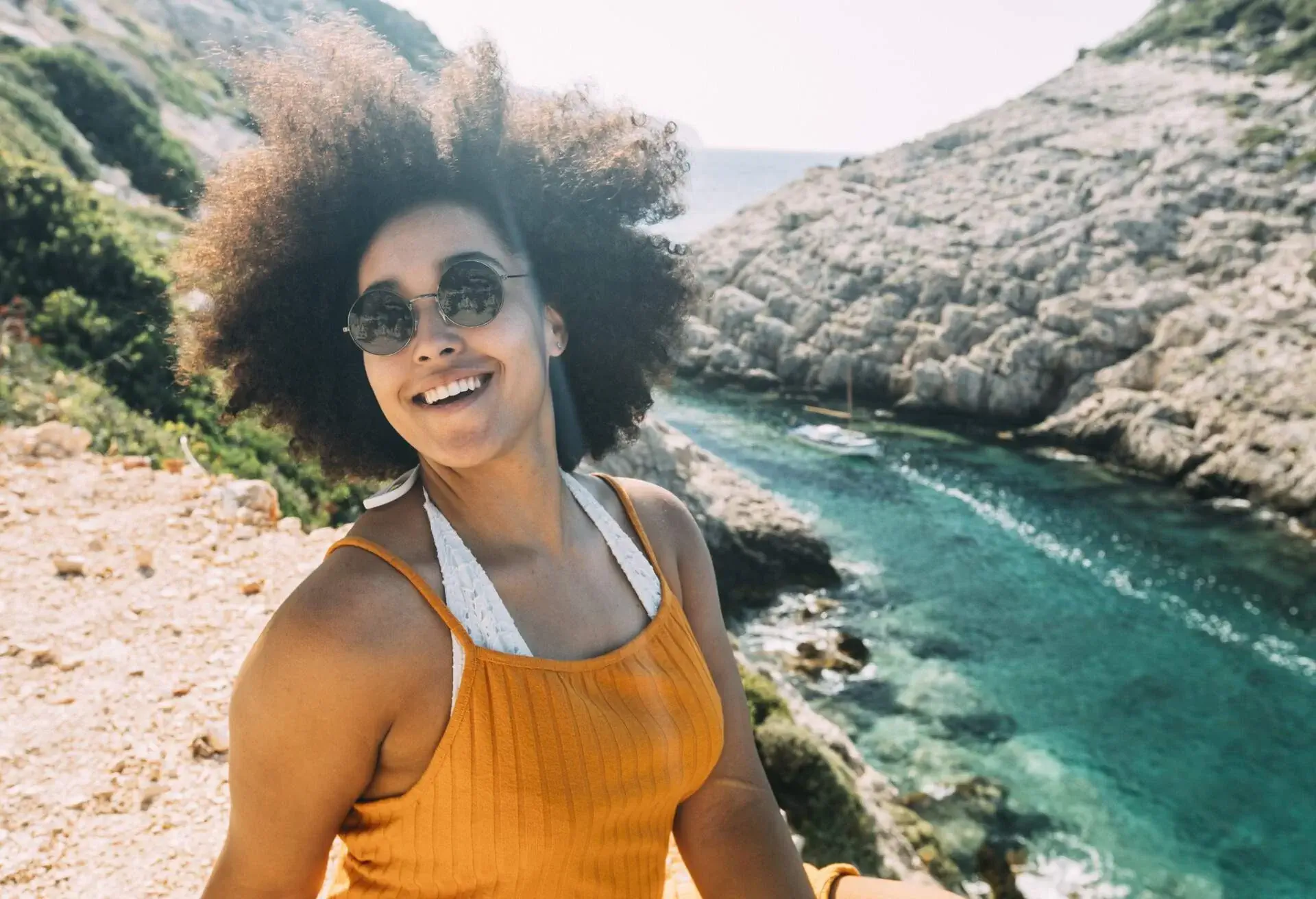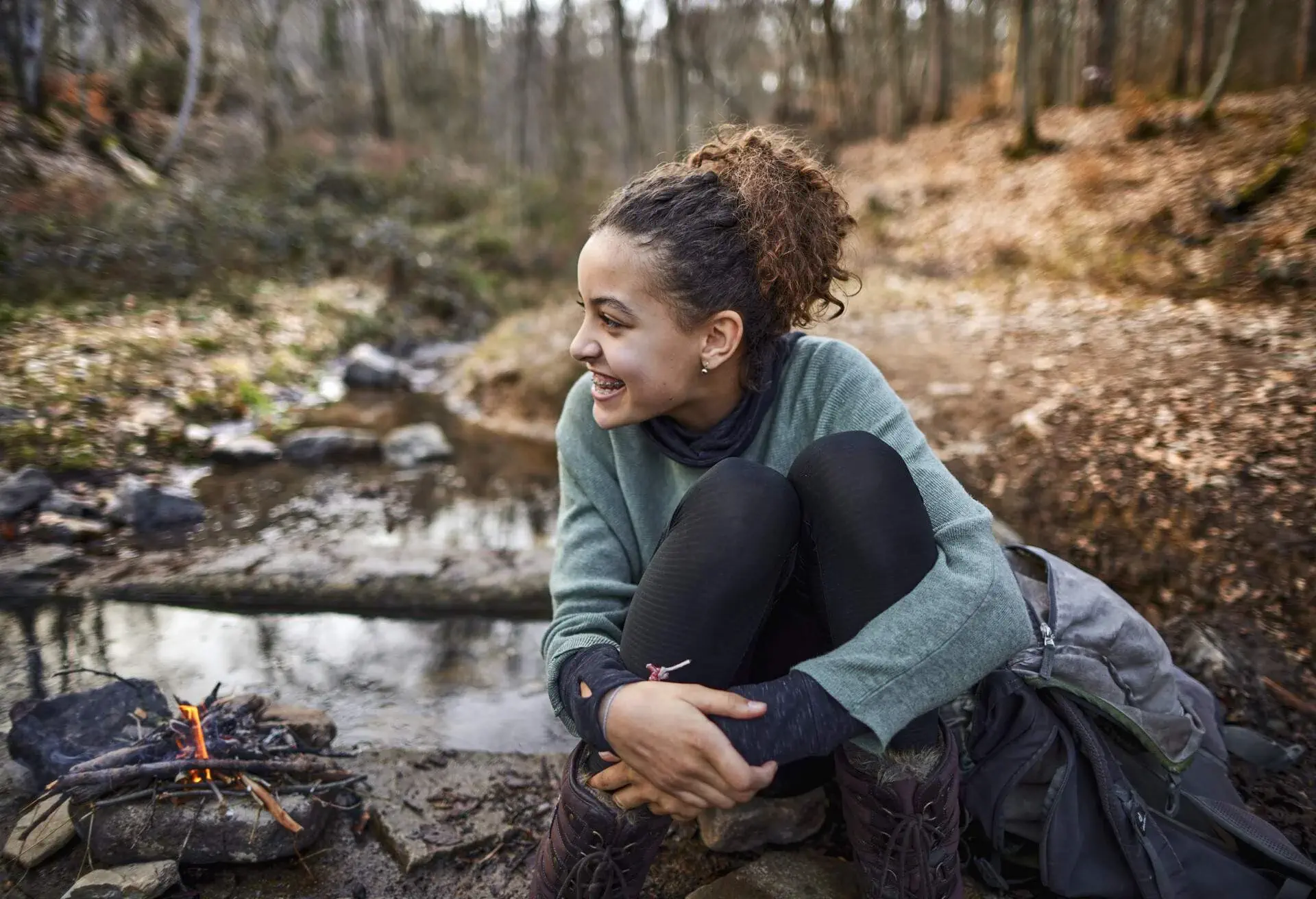Backpacking is a fantastic way to travel that gives you lots of freedom, flexibility and the world at your fingertips. Backpacking holidays are often the most budget-friendly way of travelling, letting you see and do more during your trip. Backpacking may push you outside of your comfort zone, but this will only give you more strength and confidence as you learn to navigate new situations on the fly. Australia is one of the best locations for backpackers, with fantastic cities and remarkable natural wonders.
Backpacking in Australia Travel Guide: Tips
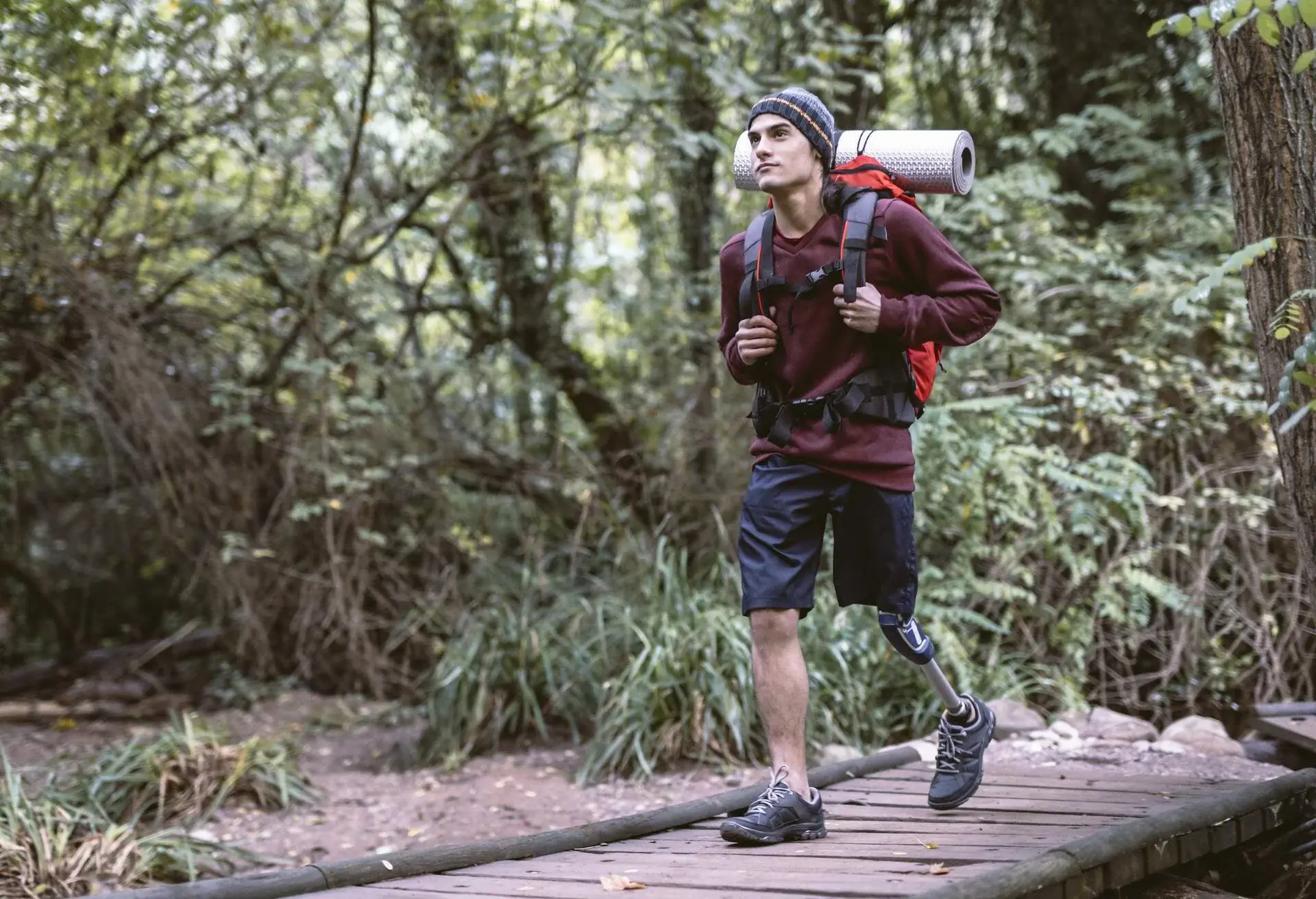
Australia’s major cities, like Sydney and Brisbane, are excellent, but make sure you take advantage of the freedom backpacking brings and head out to Australia’s beautiful regional destinations, where you’ll find wonderful experiences and, often, lower prices. The cost of accommodation will vary depending on where you choose to stay.
Hostels can cost A$20 to A$50 a night for a bed, and a spot in a campground often costs around A$15 to A$25. Some sites cost more if you want to rent a tent or other amenities, and some can be entirely free. The total costs of your trip will depend on where you stay, how much you travel around and how many activities you take part in, but average prices range from A$2,000 to A$4,000 for one month of travel.
Backpacking in Australia: What to bring
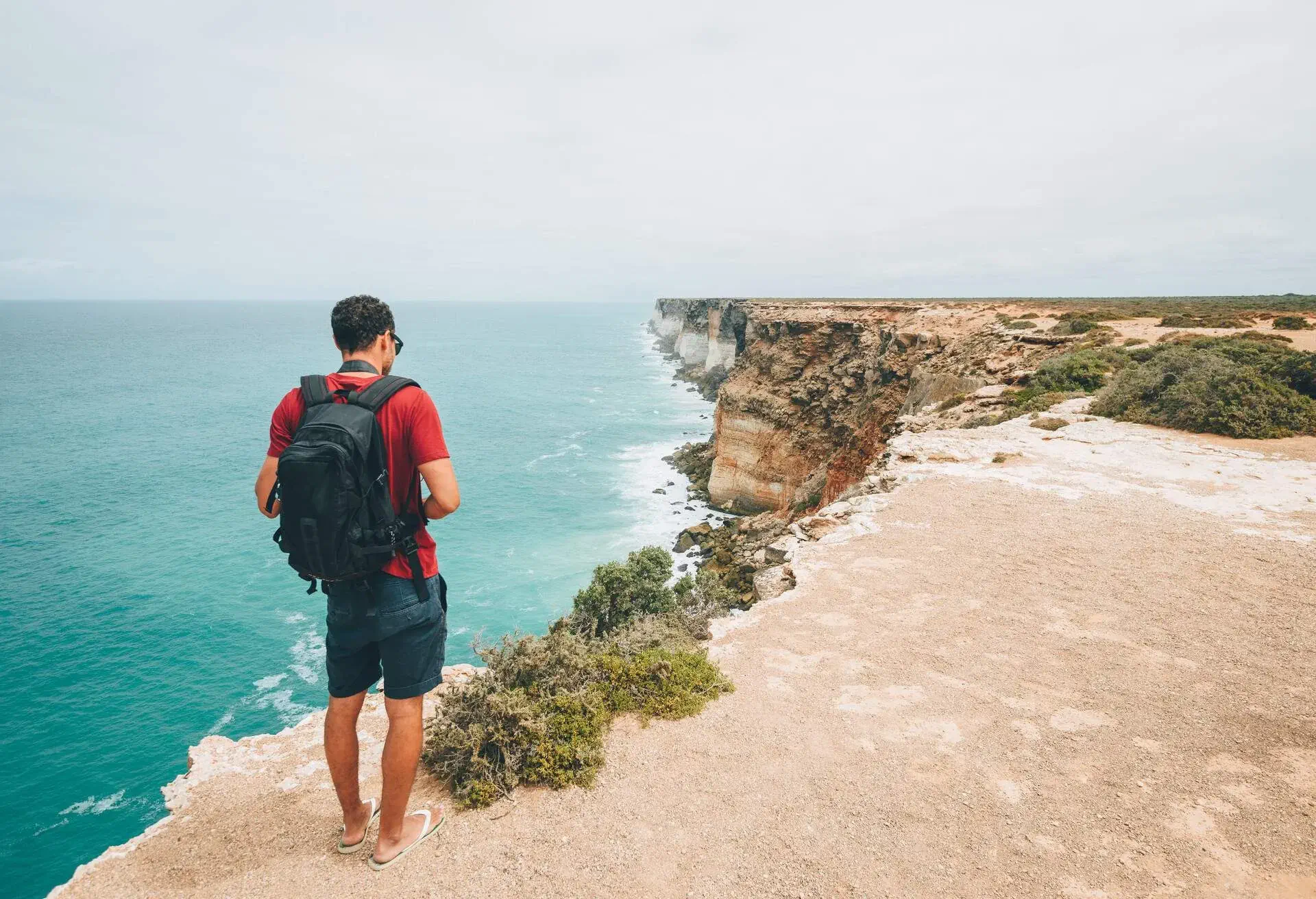
Make sure you have the right adaptors and plugs to charge any electronics you want to bring (Australia’s voltage is 230V 50Hz, and they use a plug type I). If you plan on plenty of water activities, consider some water shoes and an underwater camera (and, of course, your swimwear). Bring clothes that you can layer for extra warmth (the temperature can be temperamental in many parts of Australia) and a pair of sturdy, durable walking shoes. Sunscreen is crucial during the warmer months, and you’ll want to have mosquito spray on hand too.
Accommodation in Australia: Hostels & Campgrounds
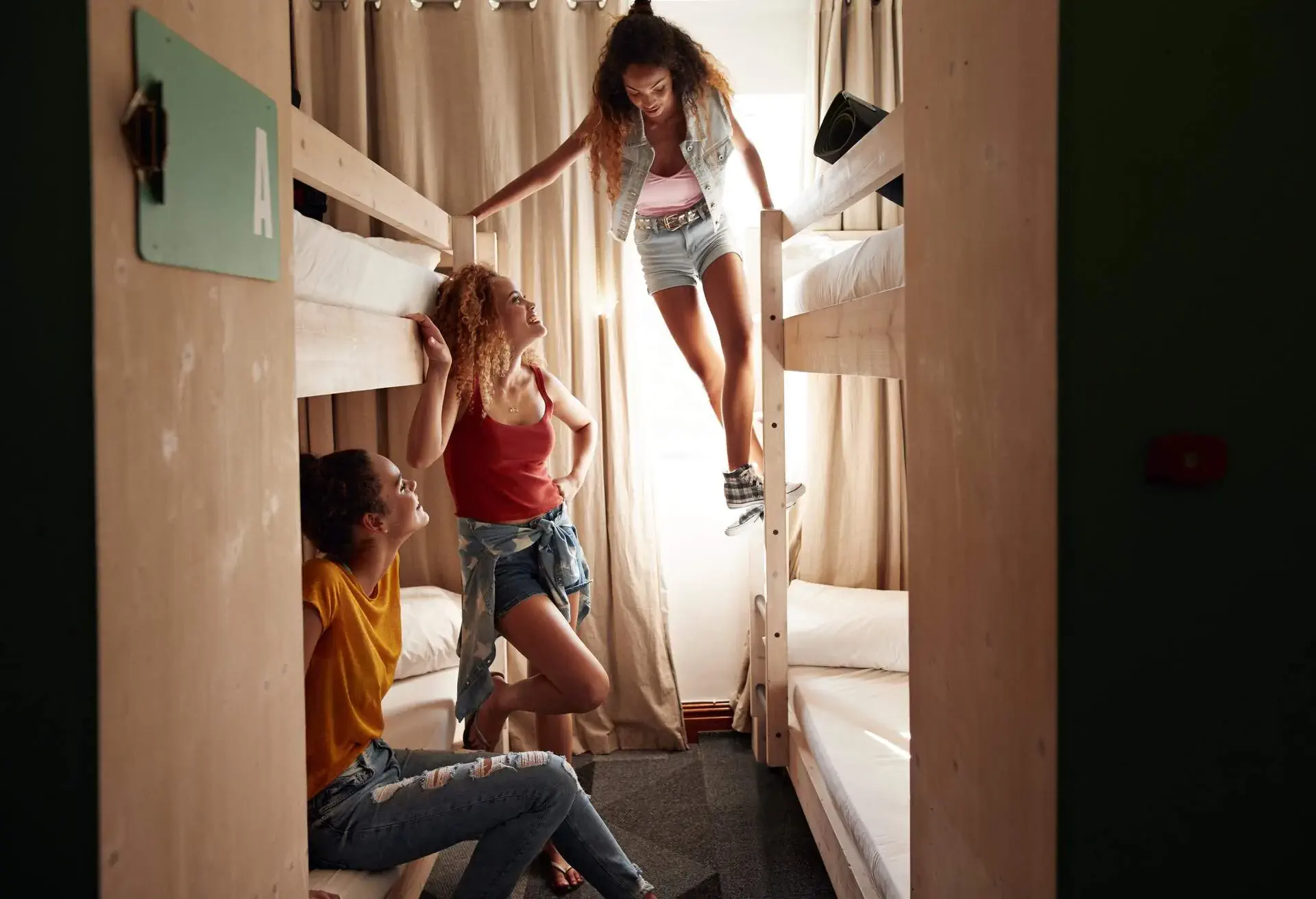
You’ll find great hostels geared towards backpackers throughout the country, in both major cities and regional areas. ‘Base’ is one of the biggest hostel chains in Australia and New Zealand, with Base Hostels in Melbourne, Sydney, Noosa, Magnetic Island and Airlie Beach. Another great way to find a place to lay your head at night is to explore some of Australia’s beautiful campgrounds. You’ll find campgrounds in national parks, coastal towns and tropical islands throughout the country. If it’s in your budget, you can also stay for a few nights in one of Australia’s hotels.
The Lowdown on Aussie Slang
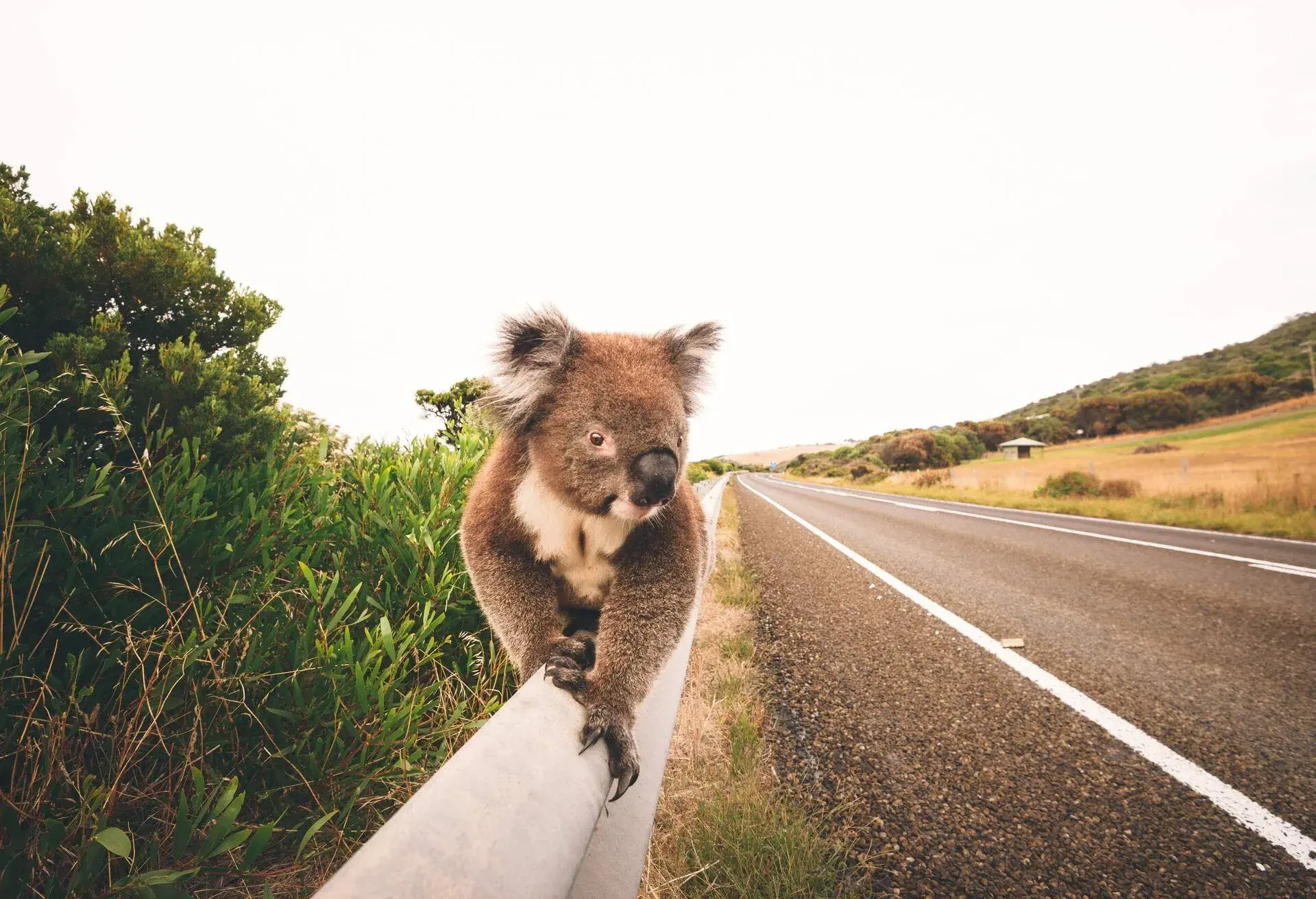
While Australian slang might be a bit confusing at first, after a few weeks, you’ll be “chucking a uey” (making a u-turn) on your way to “Maccas” (McDonald’s) in no time, but until then, here are a few quick hits to get you started. First, if someone asks you to “chuck us a cold one”, they’re asking for a beer, which you might have bought from a “Bottle-O” (alcohol shop). If someone is “defo devo,” they’re definitely devastated, but if they’re “heaps stoked,” they’re very happy. Finally, if you’re heading to the beach and someone tells you not to forget your “thongs,” they don’t mean underwear; they mean flip-flops!
Where to go backpacking in Australia
Australia is full of amazing places for backpackers to spend time. From the major cities to remote areas full of wildlife, make sure to experience everything Australia has to offer.
The Capitals
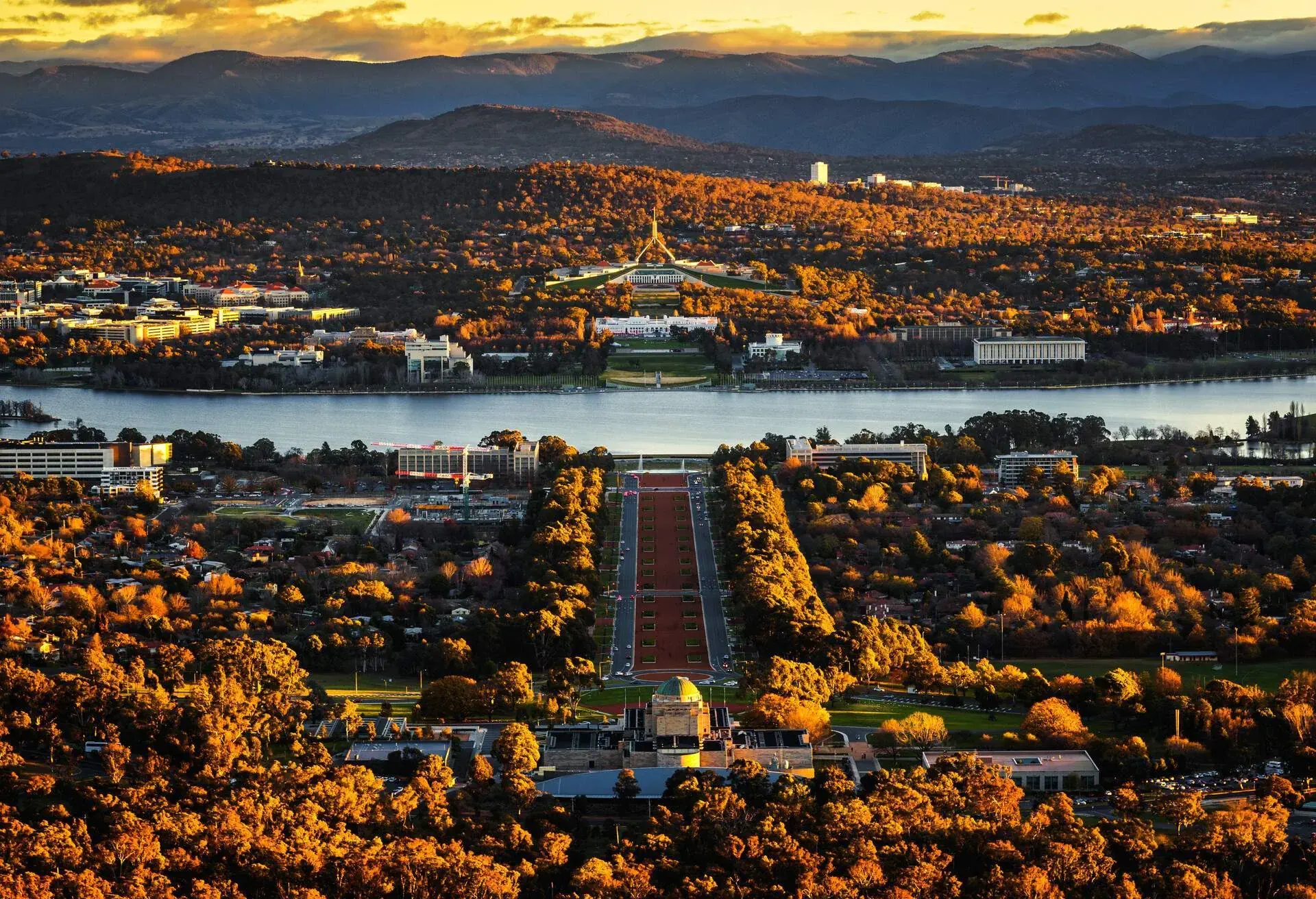
Australia’s actual capital, Canberra, was designed to be a government centre, so the main tourist attractions here are sites like the National Gallery, the War Memorial and Old Parliament, which are dedicated to the history of Australian democracy. However, there’s a reason it has the nickname of the ‘Bush Capital’, and you’ll find plenty of beautiful natural landscapes to explore.
The states’ capitals tend to be a bit more well known, and all have their own charms, with Sydney and Melbourne being major tourist hubs with great nightlife and iconic attractions. Adelaide is an excellent base for exploring South Australia’s wine region; Brisbane is perfect for sun and surf; Darwin is the gateway to the incredible Kakadu National Park; Perth is home to beautiful gardens and gives you access to gorgeous islands off the coast and Hobart is home to some of the best local produce you’ll find in the country.
Kings Canyon, Northern Territory
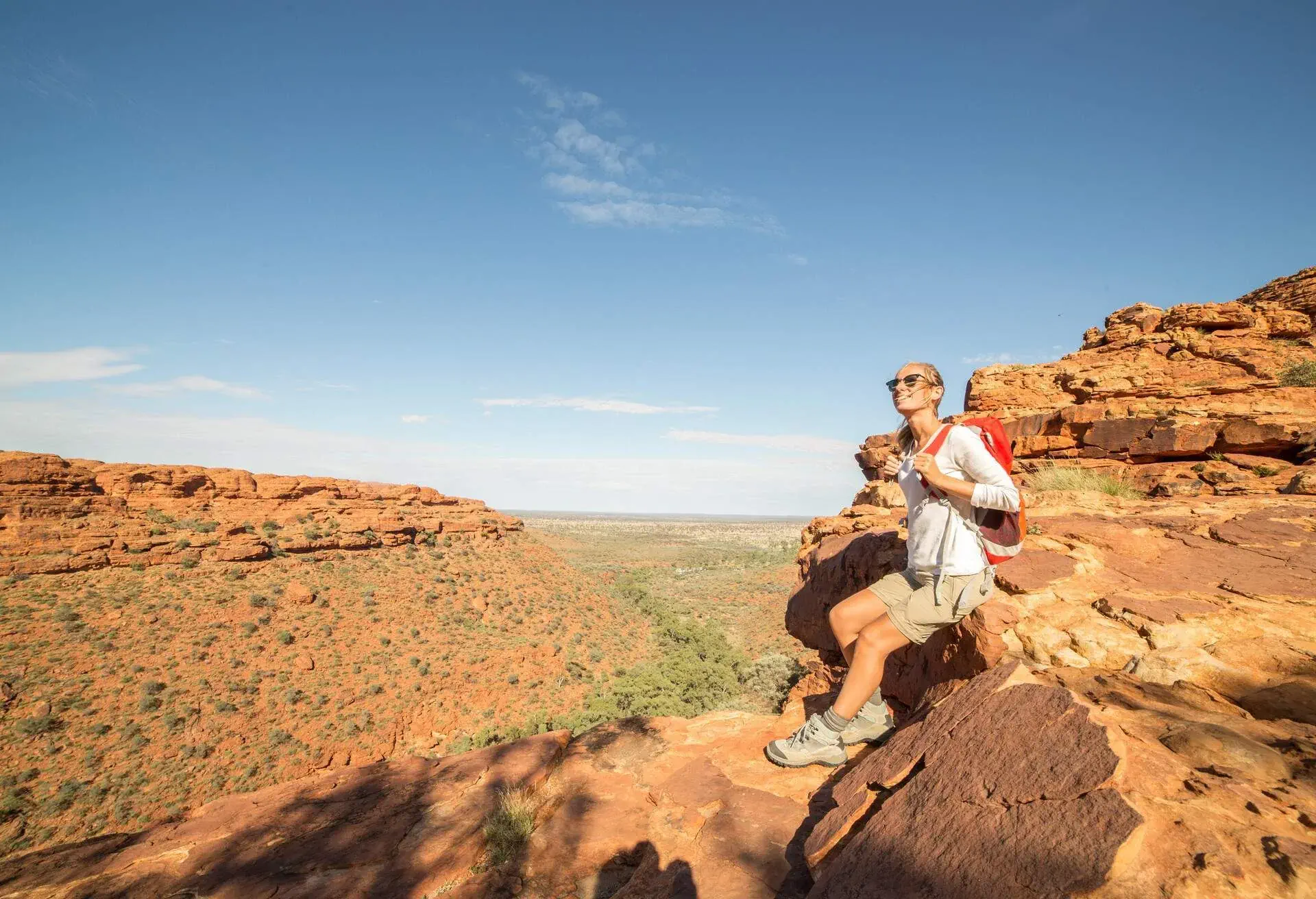
In the Northern Territory’s Watarrka National Park, Kings Canyon, home to the Luritija and Arrente peoples, stretches across 710 square kilometres. With spectacular red walls that reach as high as 300 metres above pockets of trees like red gums and cycads. Take in the full scope of the canyon by completing the canyon rim walk, which is around six kilometres long and will provide you with amazing views. Along the way, check out the ‘Lost City’ rock formations and the Garden of Eden, a peaceful rockhole surrounded by a remarkable selection of rare plant life.
Uluru, Northern Territory
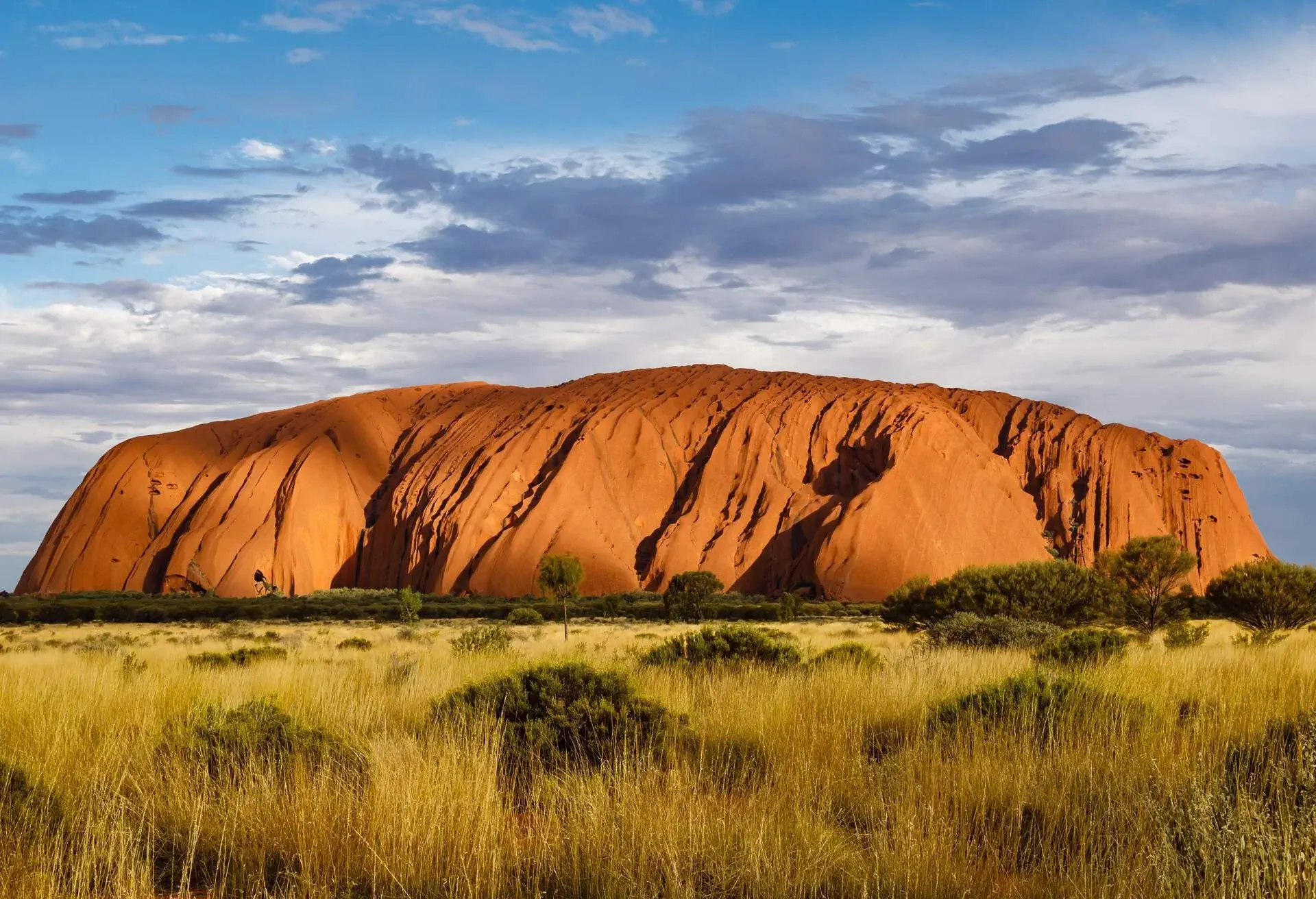
Around three hours from Kings Canyon lies one of Australia’s most iconic natural landmarks: Uluru, a giant monolith of sandstone, right in the heart of Australia’s ‘Red Centre’. Visit the cultural centre to learn about the local Anangu culture and then walk around its base and take in the awe-inspiring sight.
Coober Pedy, South Australia
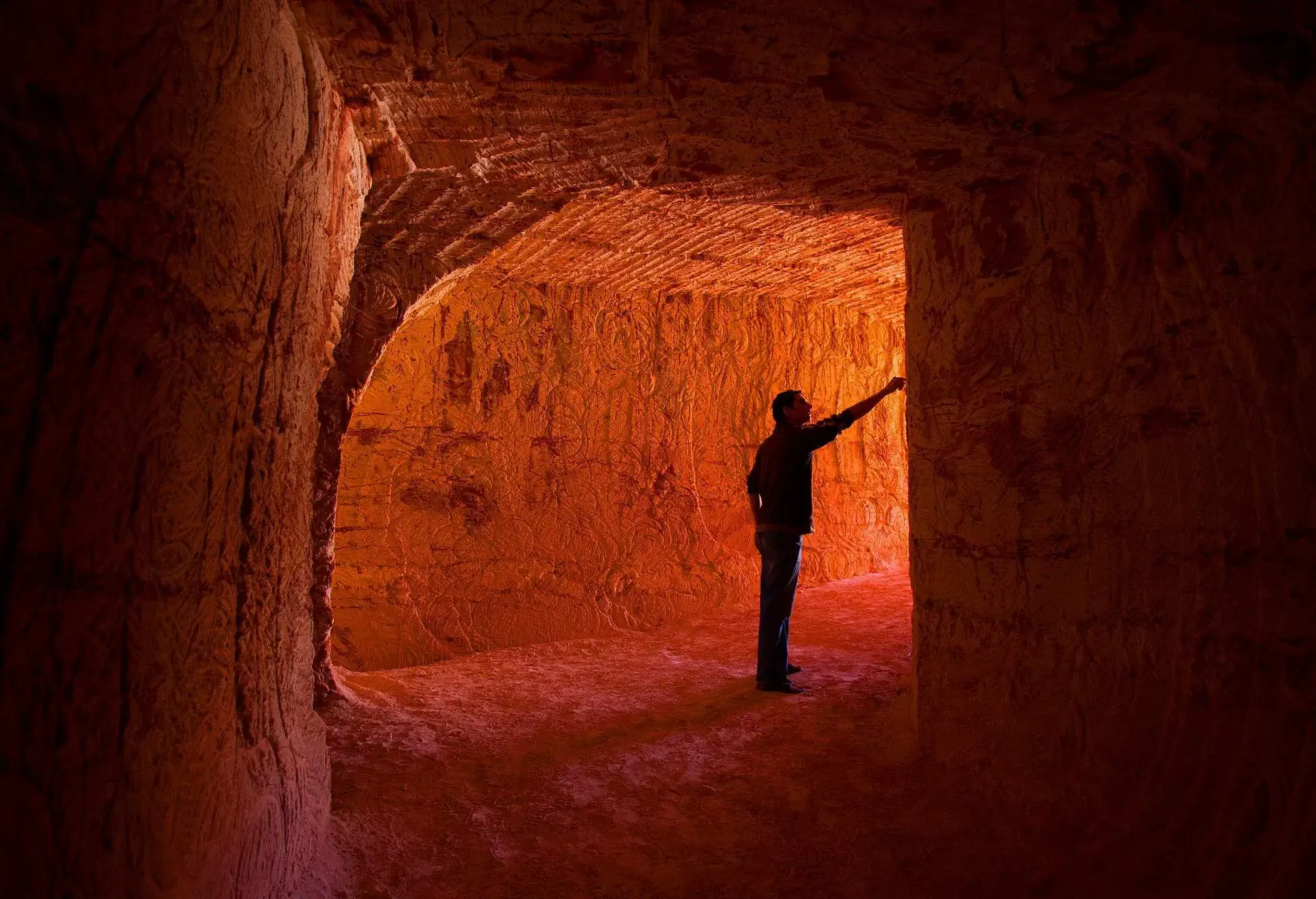
Coober Pedy is a super unique location in South Australia, often referred to as the “opal capital of the world.” The area gets incredibly hot during the day, which is why you’ll find underground areas known as dugouts. One of these dugouts is ‘Faye’s Underground Home,’ which was excavated in the 1960s. Another dugout, Radeka Downunder Dugout Motel & Backpacker Inn, has underground beds you can book. You can find opals available for purchase (at excellent local prices) and take a tour of a working opal mine and fossick for opals yourself. It’s a fascinating location that also provides one of the best sunset views you’ll find in Australia.
Magnetic Island
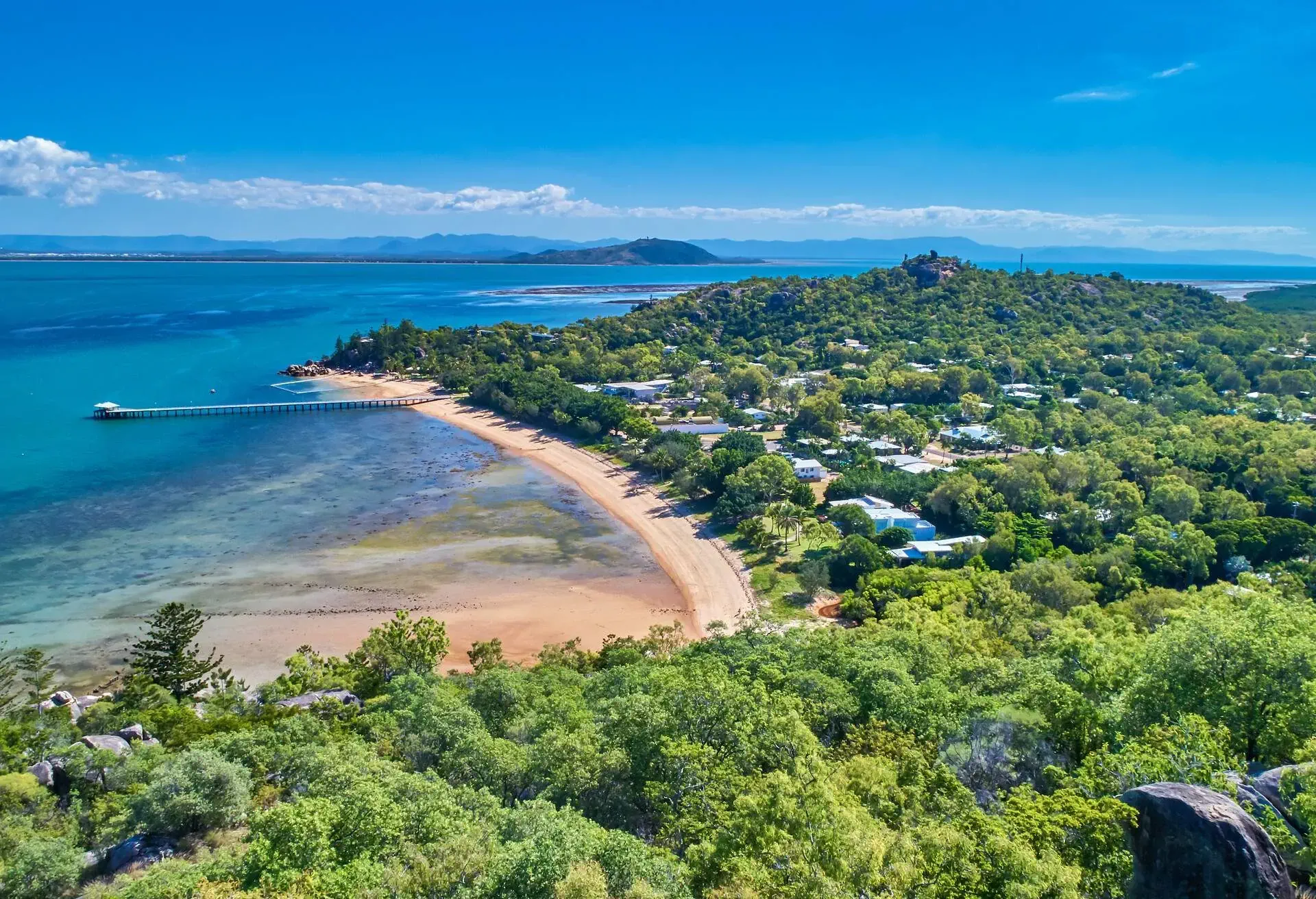
Magnetic Island sits in the Coral Sea, around 8 kilometres off the coast of Queensland, and you can reach it from Townsville via ferry. It is popular with backpackers due to its absolutely stunning landscapes of massive granite boulders, beautiful trees and sandy beaches. It also has some excellent coral reefs to explore, and many of its beaches are sheltered and secluded, with plenty of space to set up for a day relaxing on the sand and in the water. Explore the island on a bushland hike and get glimpses of the island’s local wildlife, including possums, wallabies, echidnas and koalas.
Noosa Heads
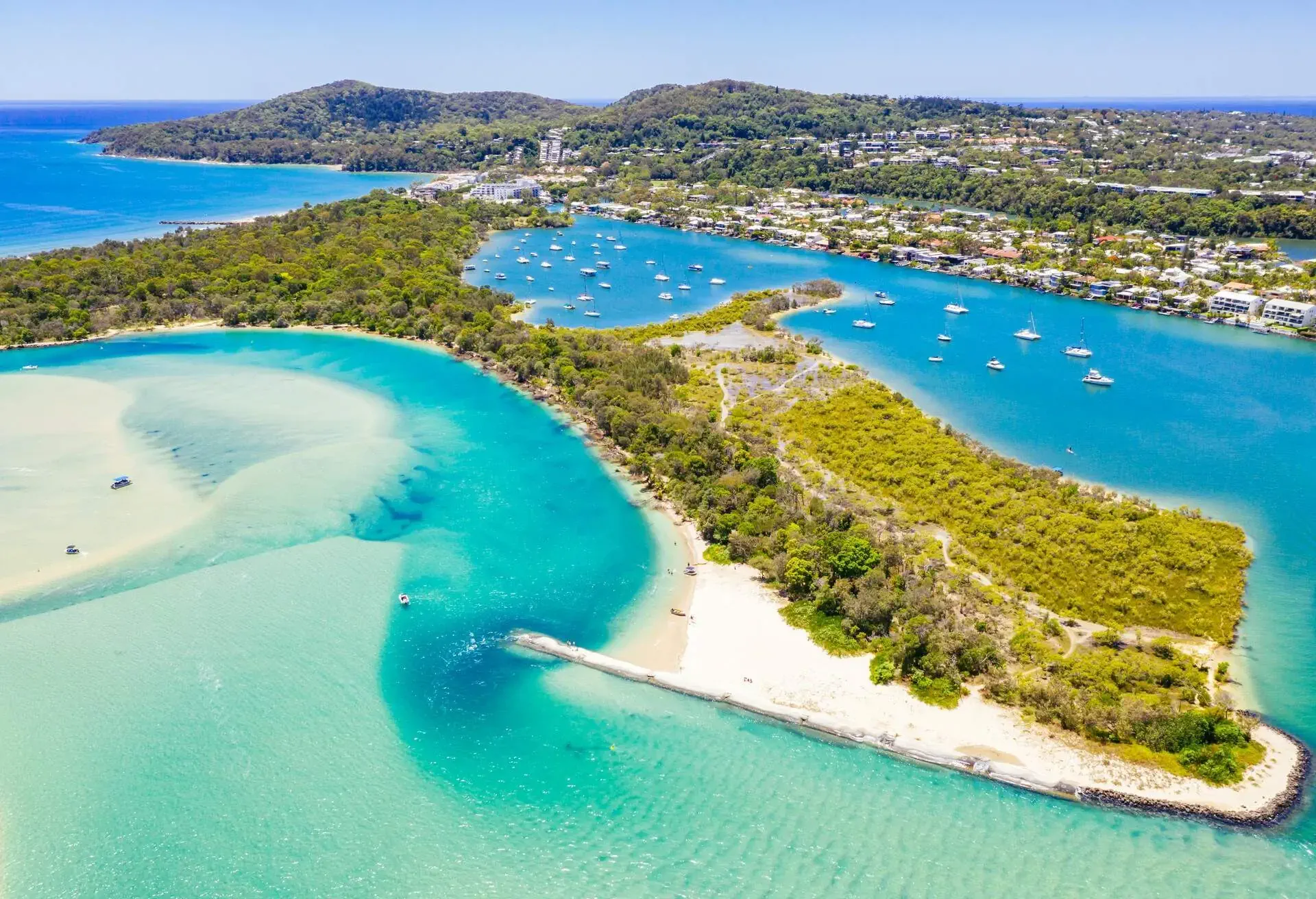
Noosa Heads is one of Queensland’s most popular resort areas on the Sunshine Coast, known for its big surf, excellent fishing spots and local wildlife. You can explore Noosa National park near the beaches, which spans 40 square kilometres with thick forests of eucalypt trees and is full of wildlife like koalas, parrots, cockatoos and possums.
The park also provides views of the rocky headlands that overlook Noosa’s main beach, a patrolled beach excellent for swimming and with a few great fishing spots. If you love surfing, you’ll love the Festival of Surfing that Noosa holds yearly, which includes amazing surfing events, luring skilled surfers from around the world, and excellent food markets and entertainment.
Surfer’s Paradise, Queensland
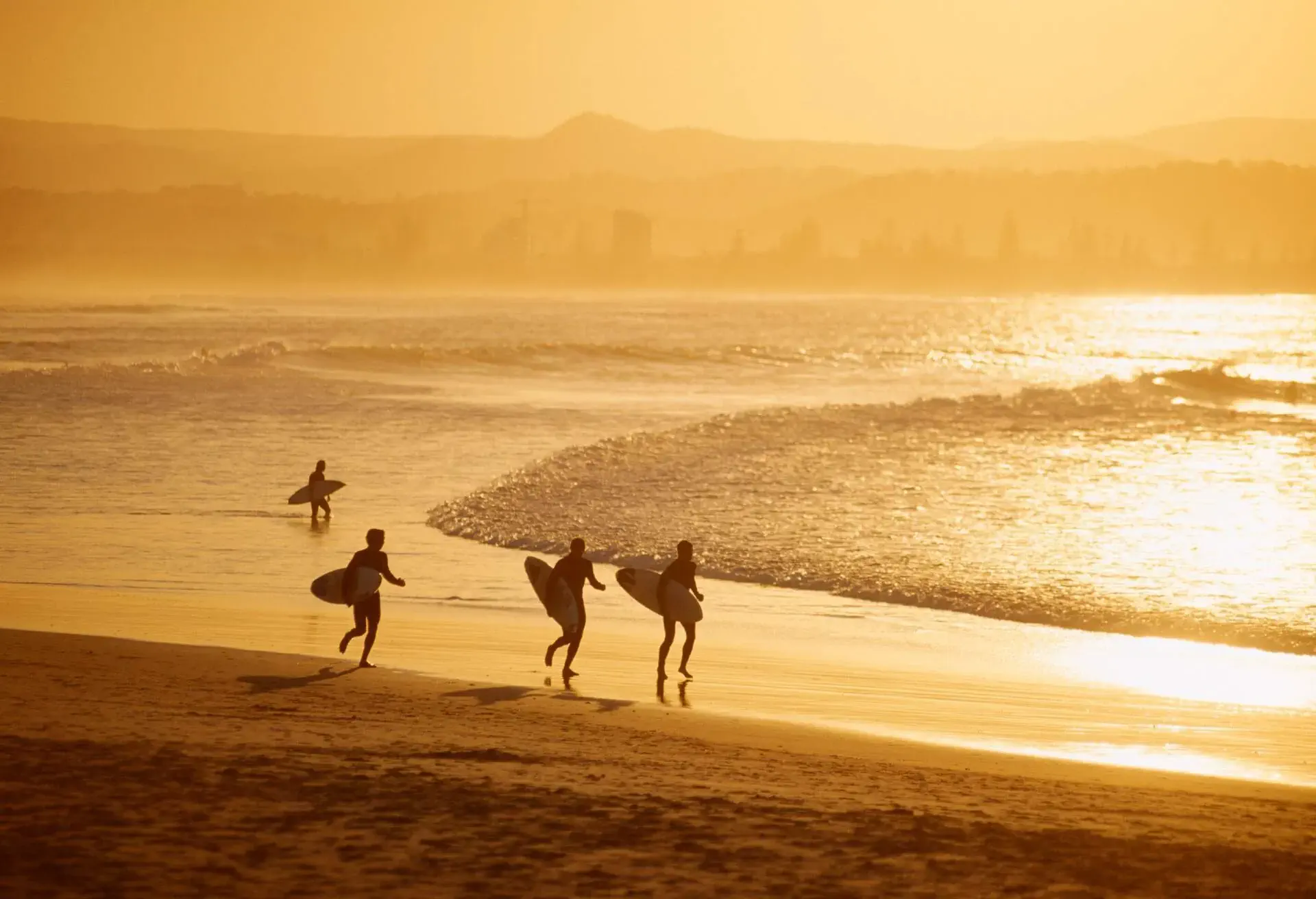
Surfer’s Paradise is an idyllic seaside resort area on Queensland’s Gold Coast, known for beautiful skyrise buildings and picturesque white sand beaches. You’ll find a thriving nightlife here, including frequent evening markets and plenty of nightclubs, particularly on Cavill Avenue. As the name suggests, it is a fantastic place to go surfing, and Surfer’s Paradise Beach is particularly good for beginner surfers with gentler waves. However, you often won’t be able to surf in the specific areas that are flagged off for swimmers. The BUNK is a great hostel close to the beach and bars, with pod-like bunk beds equipped with privacy curtains, power sockets and a reading light.
The Great Ocean Road, Victoria
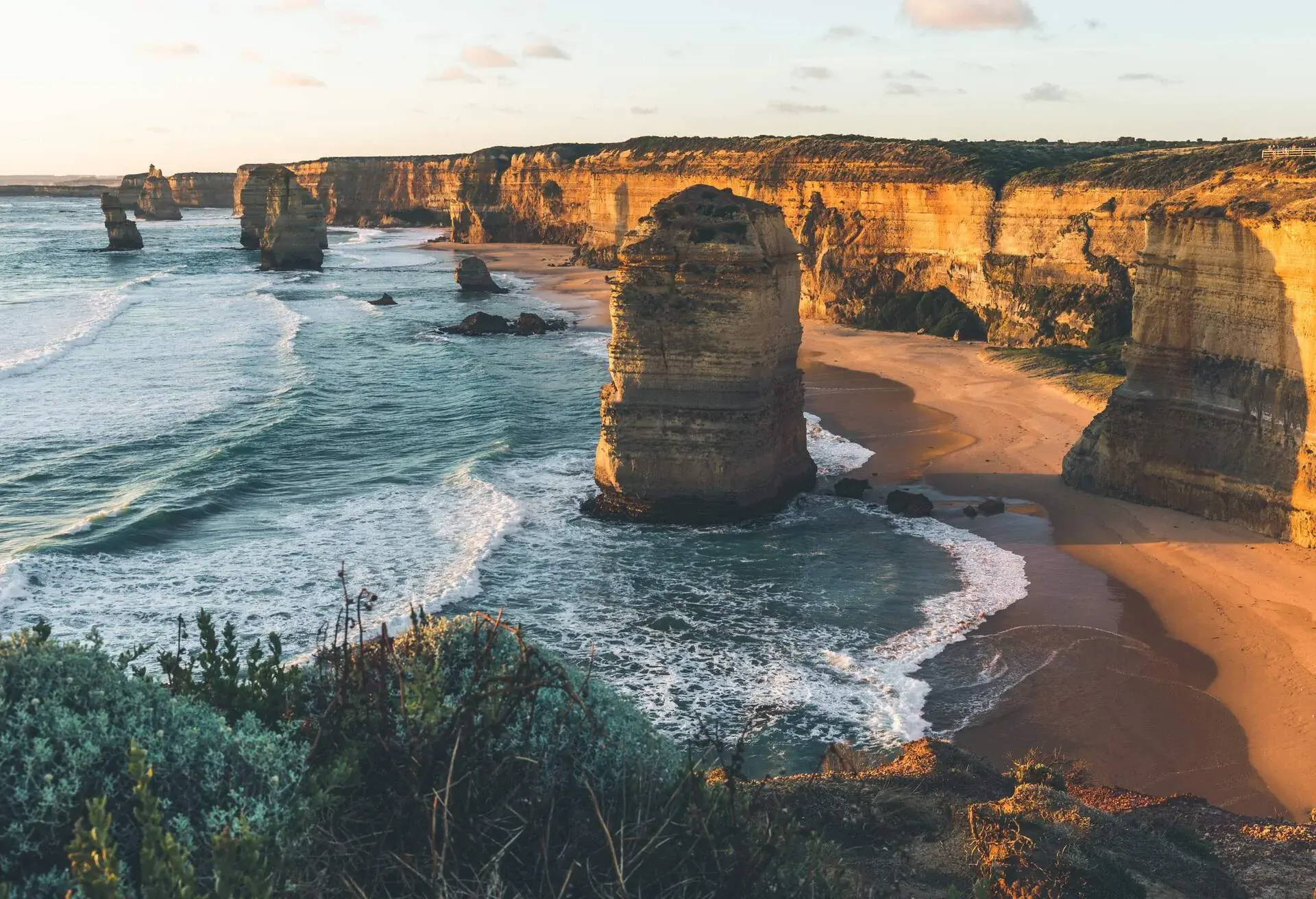
If you head to Melbourne during your trip, then you’ll definitely want to take the opportunity to explore at least part of the 240 kilometres of coastal towns and cities that make up the Great Ocean Road. It begins in Torquay and ends in Allansford, with some of Australia’s best seaside towns, including Apollo Bay and Port Fairy. Check out the 12 Apostles rock formation near Port Campbell and get panoramic views of the ocean at Marriner’s Lookout in Apollo Bay. The most common way to explore the area is by car, but you can also travel the Great Ocean Road by bus or, if you’re an intermediate or more experienced cyclist, you can hire a bike.
The Great Otway National Park, Victoria
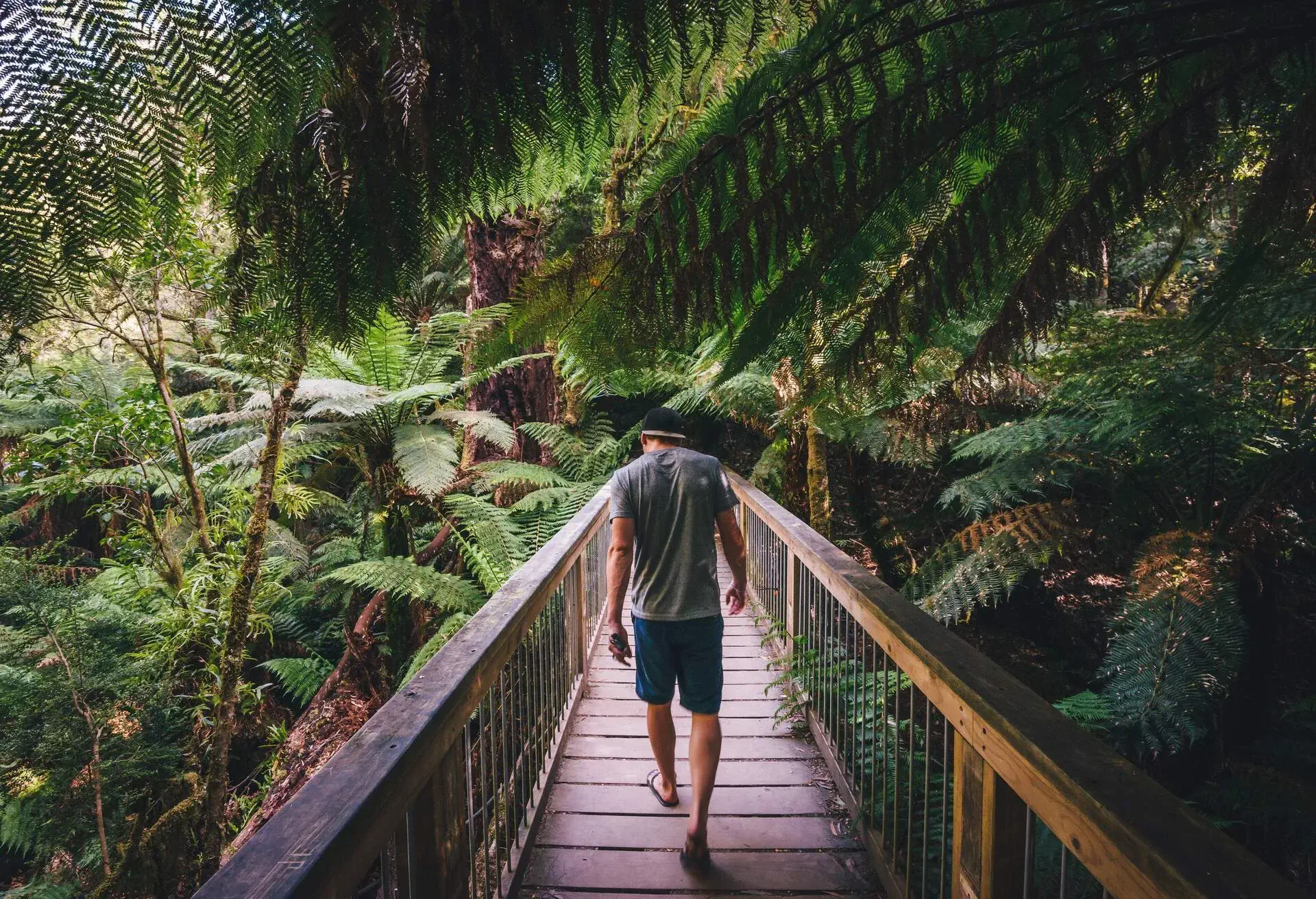
One of the best places to stop off along the Great Ocean Road is the Great Otway National Park, an area stretching 1,032 square kilometres that includes coastland, forests and mountains. One of the most magical parts is the Redwood Forest, where Californian Redwoods, planted back in 1936, stretch 70 metres into the air to create a wonderfully peaceful atmosphere. There are multiple waterfalls in the region, and Hopetoun Falls is one of the best, falling from a height of around 30 metres into the Aire river. You can see it from the top down or head down the stairs that lead to the viewing platform at the base of the falls.
Wilsons Promontory, Victoria
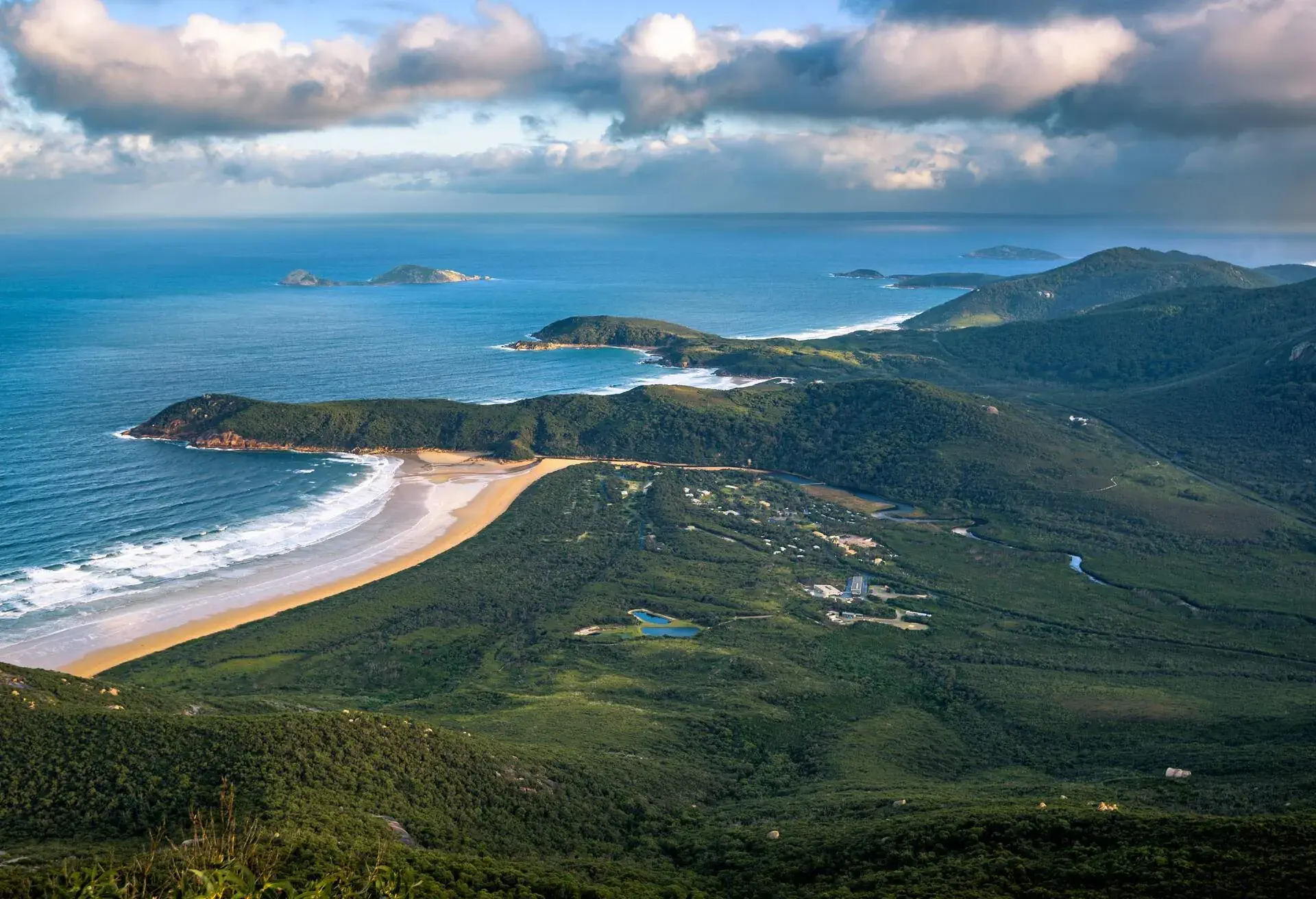
Wilsons Promontory National Park (or “Wilsons Prom” to the locals) is a beautiful area southeast of Melbourne with several camping grounds scattered amongst its granite mountains and forested plains. The Tidal River Campground is a family-friendly camping area just a short walk from Norman Beach, an excellent beach for swimming, surfing and snorkelling. You can visit the Wilsons Promontory Marine National Park if you want to get up close to marine life. It’s Victoria’s largest protected marine area, home to fascinating underwater ecosystems. Mountains in the area, such as Mount Bishop and Mount Oberon, have excellent hiking trails that provide panoramic views at their summits.
Byron Bay, New South Wales
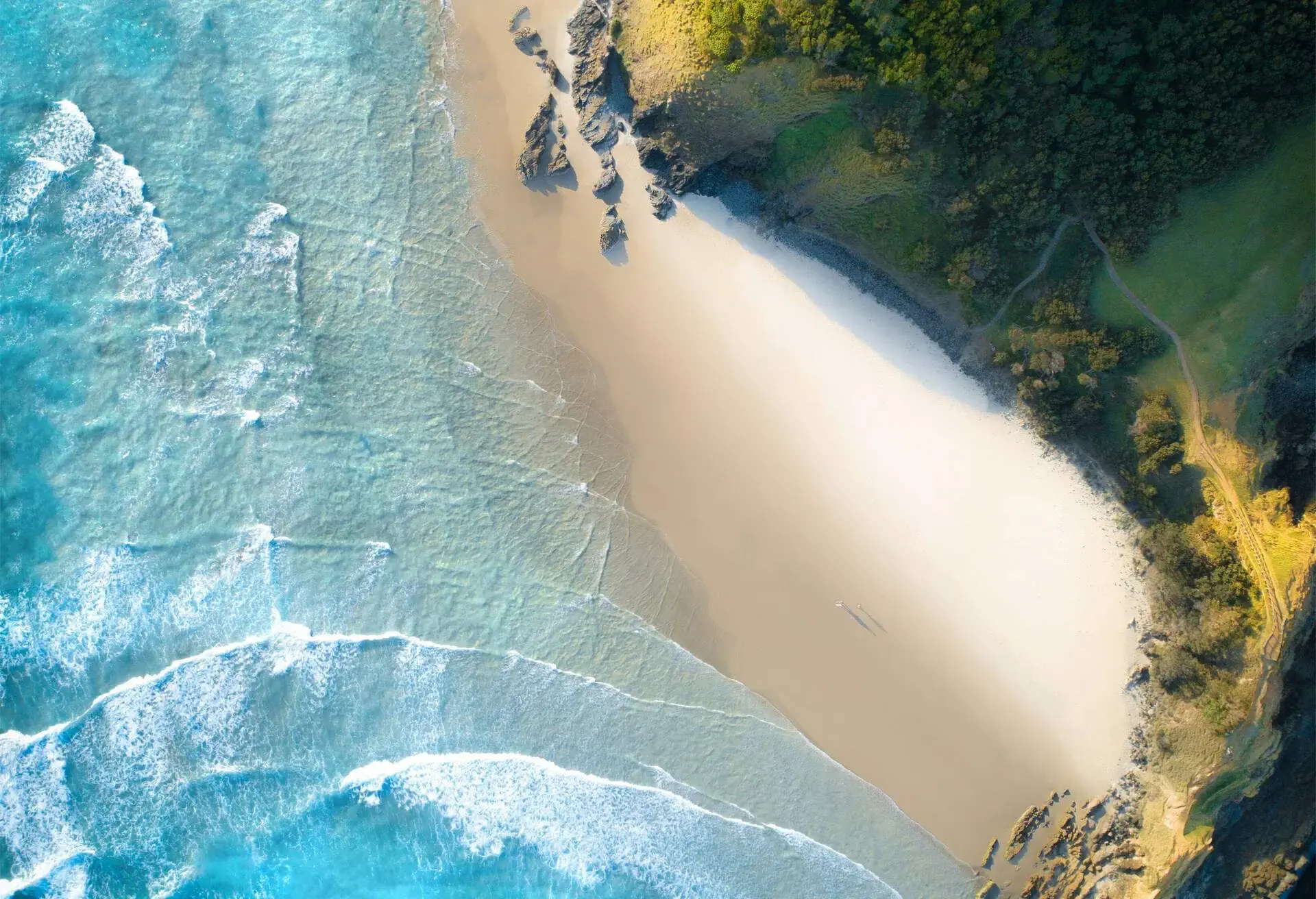
The coastal town of Byron Bay on the North Coast of New South Wales is packed with picture-perfect beaches, peaceful rainforests and a thriving, creative community. Byron Bay is the epitome of the laid-back beach lifestyle where you can get up early to do yoga with the sunrise, take a horse ride across the beach in the afternoon and then kick back with a pint at a pub in the evening.
Music festivals are frequent and often go hand in hand with the excellent markets selling delicious produce and handmade goods. You can spot dolphins, turtles and whales in the Cape Byron Marine Park and take the Cape Byron walking track through 3.7 kilometres of rainforest, beaches, grassland and clifftops to the Cape Byron Lighthouse, which sits at Australia’s easternmost point.
Cairns, Queensland
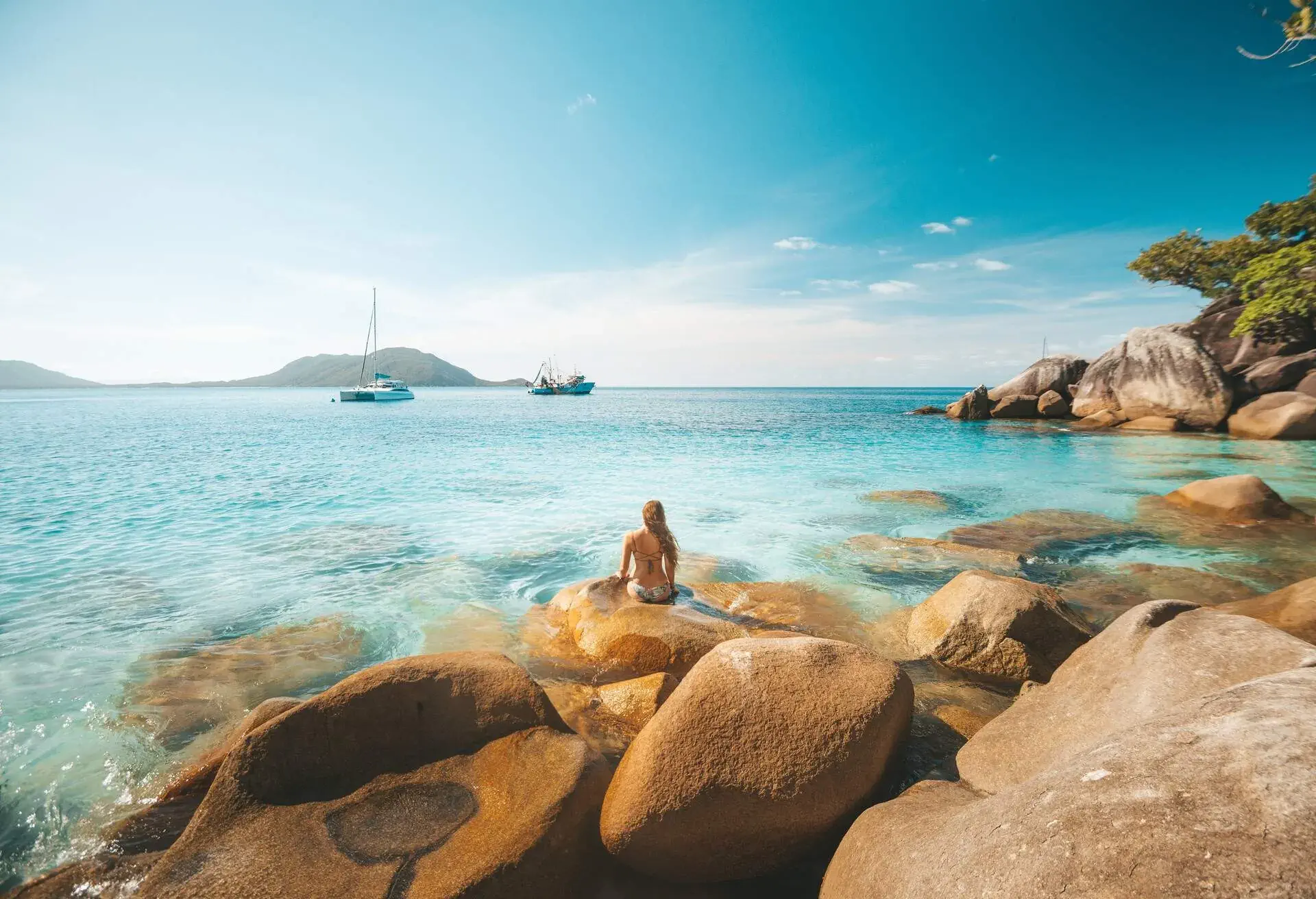
In far north Queensland, the city of Cairns is your one-stop shop for incredible marine wildlife, stunning dense rainforest and all the rest and relaxation you’re craving. Cairns is the perfect home base for exploring the Great Barrier Reef, the world’s largest coral reef, and the Daintree Rainforest, a region home to a complex, biodiverse ecosystem.
Fraser Island
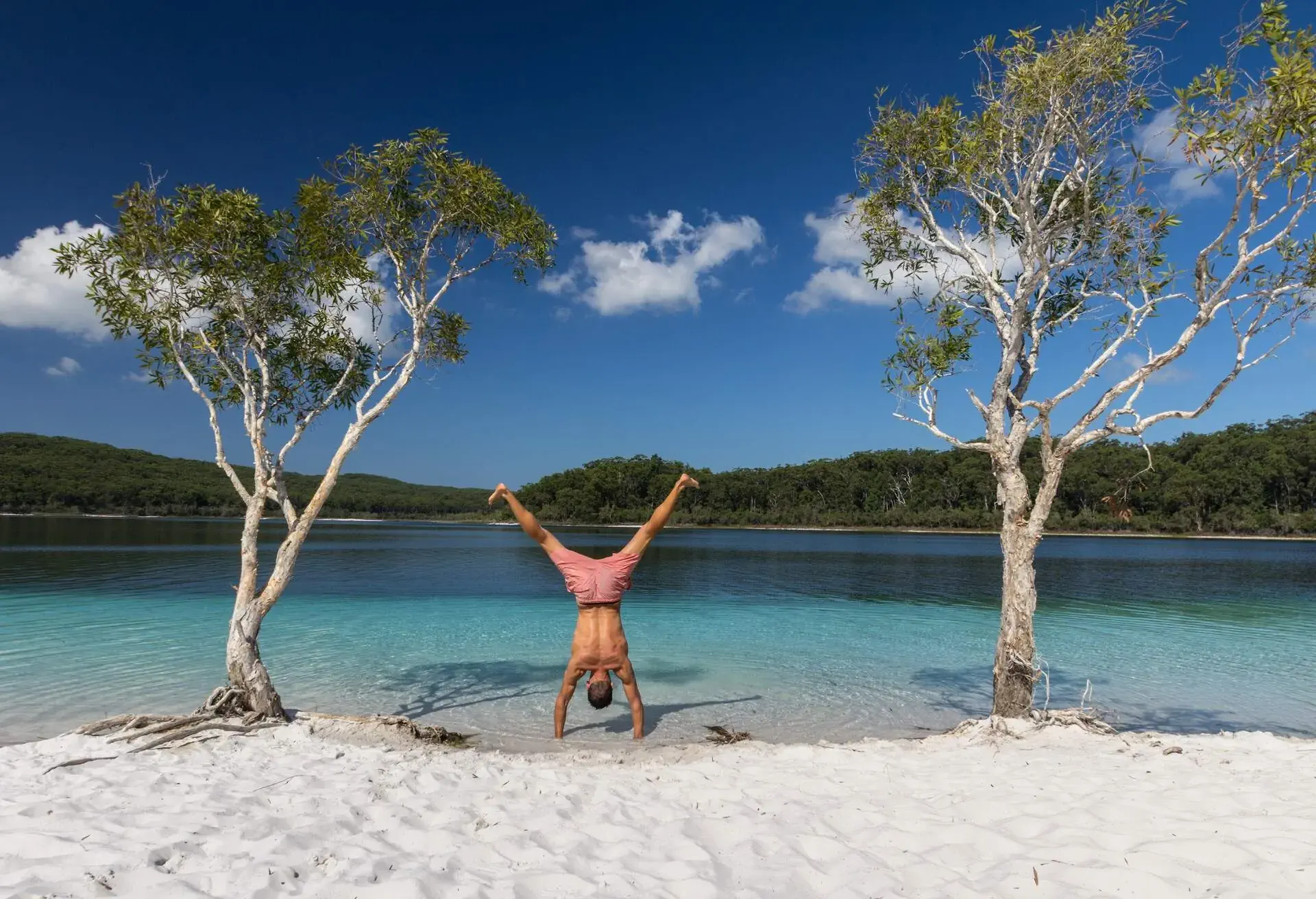
World Heritage Listed Fraser Island sits just off the coast of Queensland in the Wide-Bay Burnett region, around six hours from Brisbane by car and around one hour if you fly. It is the largest sand island in the world, over 120 kilometres long, and it is home to world heritage sites and beautiful, diverse landscapes. Fraser Island is home to over 100 freshwater lakes, including over half of the world’s ‘perched lakes’ (lakes created entirely from rainwater) so make sure to head to one of their freshwater lakes where you swim in clear, warm waters. You can also get to know some of Australia’s most iconic animals, including koalas, kangaroos, crocodiles and dingoes.
The Whitsundays
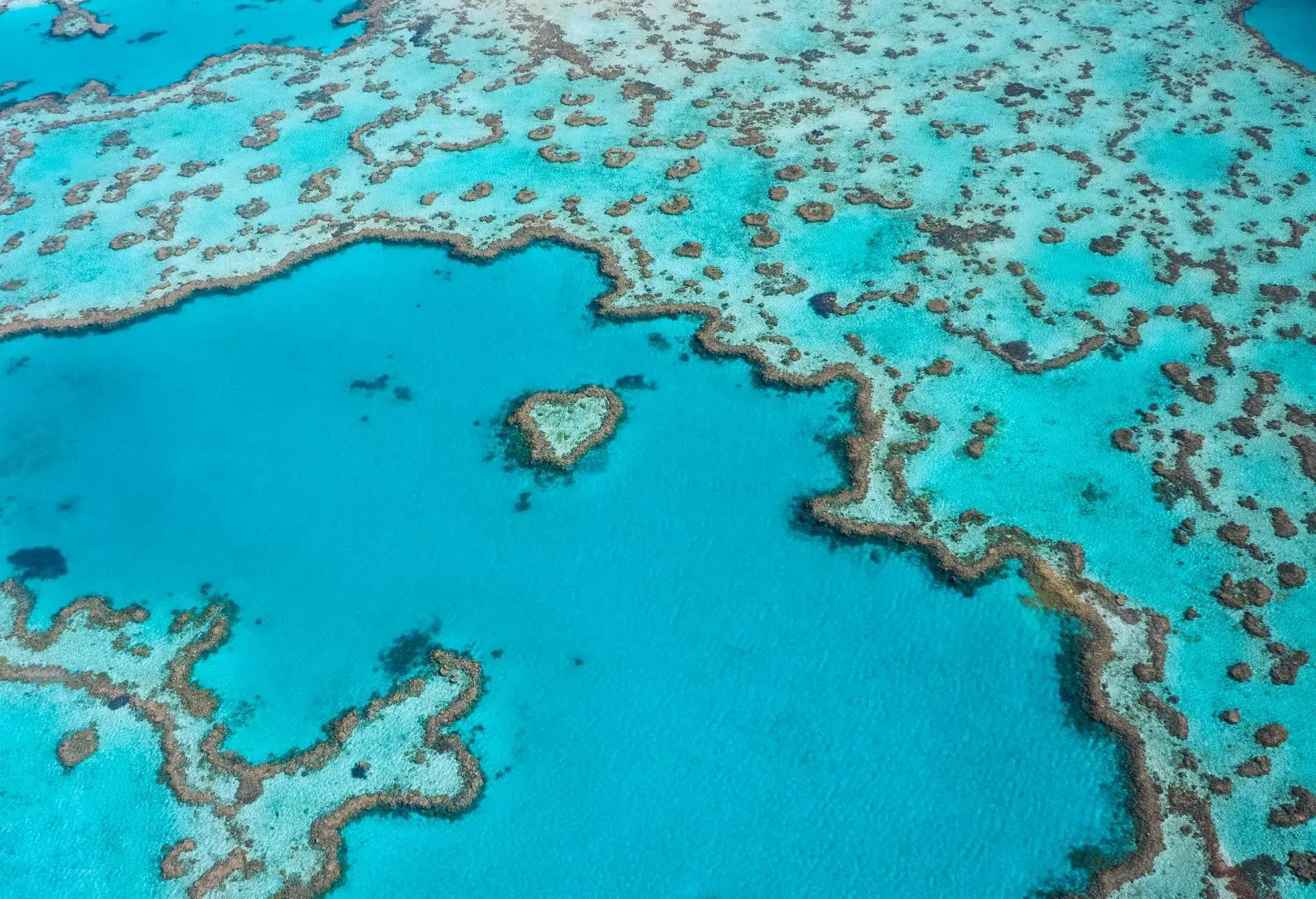
Swap one large island off the coast of Queensland for a large collection of smaller islands, with the Whitsundays, made up of 74 islands that lie between the coastline and the Great Barrier Reef. Only a few of the islands have accommodation available, so many travellers set up their base camping or in a hostel at Airlie Beach, a gorgeous coastal town on the mainland that’s around one hour away from the islands via a ferry.
Hamilton Island is the region’s most populous (and popular) island, but you should also be sure to visit Hook Island for its stunning reefs, perfect for snorkelling. Next, visit Daydream Island for a super luxurious spa retreat and Whitsunday Island, the largest island, which has few amenities but plenty of clear blue water and soft sands.
Cradle Mountain – Lake St Clair, Tasmania
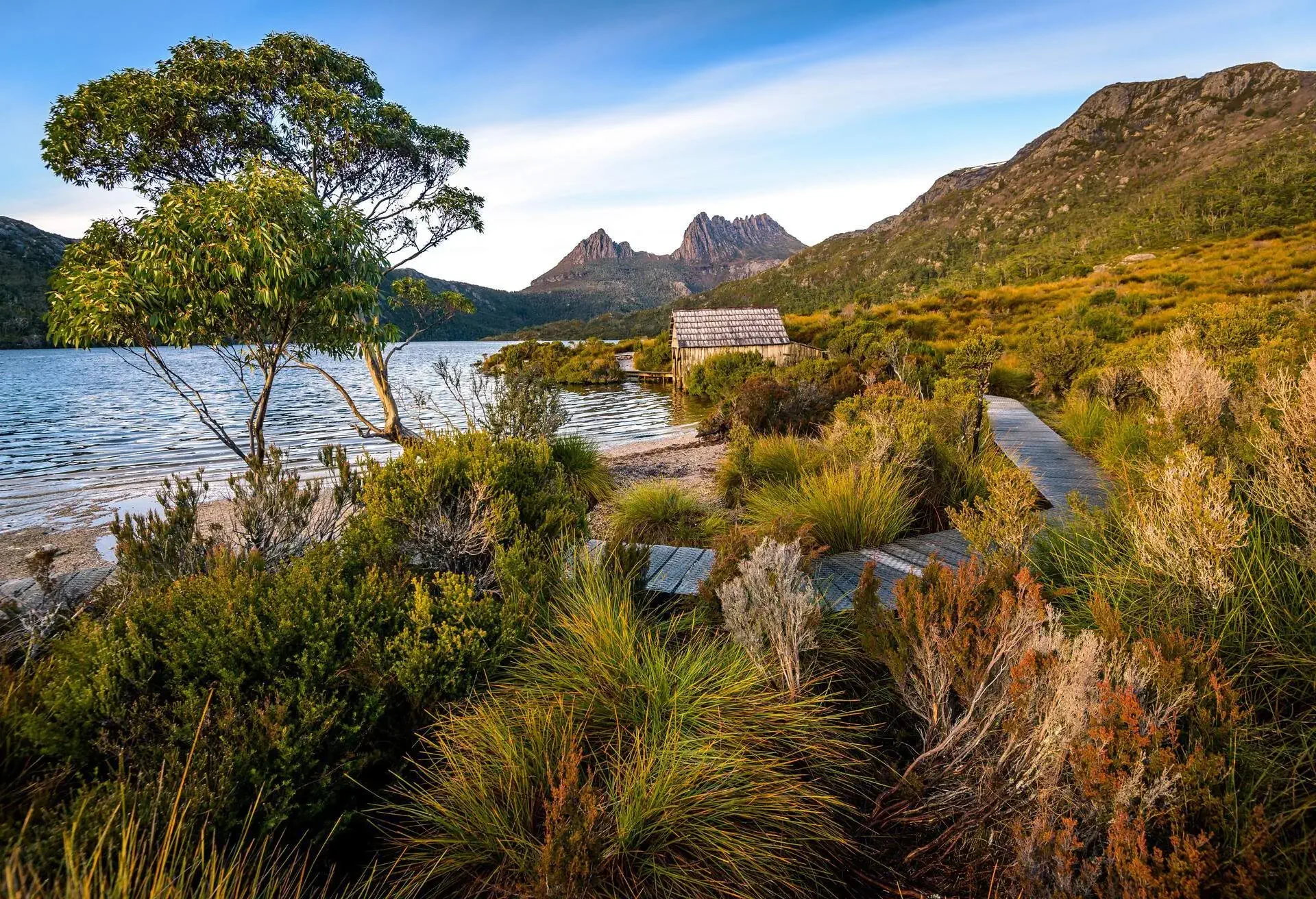
The Cradle Mountain-Lake St Clair National Park joins two of Australia’s most beautiful natural attractions. Cradle Mountain sits at the northern end of the park. It is one of Tasmania’s most popular attractions, with travellers from all over Australia and the world coming to hike the mountain (you can complete a full hike of the mountain to the summit and back down in roughly seven hours).
Lake St Clair, Australia’s deepest freshwater lake, sits at the southern end of the park and is a wonderfully peaceful, almost ethereal location surrounded by forests and walking tracks on all sides. If you’re feeling adventurous, you can even hike from Cradle Mountain to Lake St Clair over the course of about five days on the Overland Track. On the way, you might spot wallabies, wombats, platypuses and many other Australian animals.
Rottnest Island, Western Australia
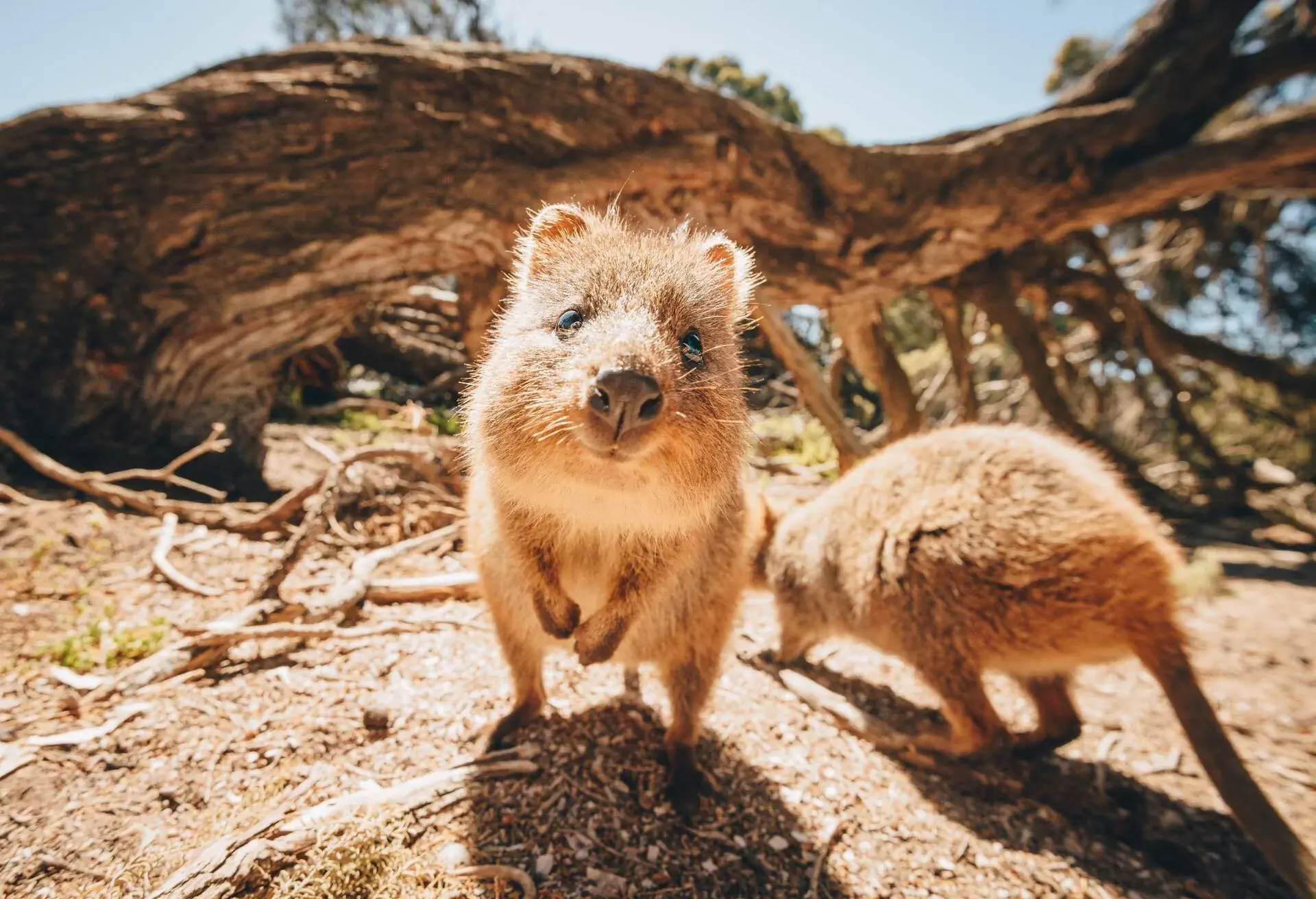
Rottnest Island off the coast of Western Australia is home to Australia’s most photo-ready critters: Quokkas. With big round cheeks and adorable smiles, these small marsupials are always up for a selfie or two. Away from the quokkas, Rottnest has beautiful beaches and the chance to see humpback whales between September and November.

